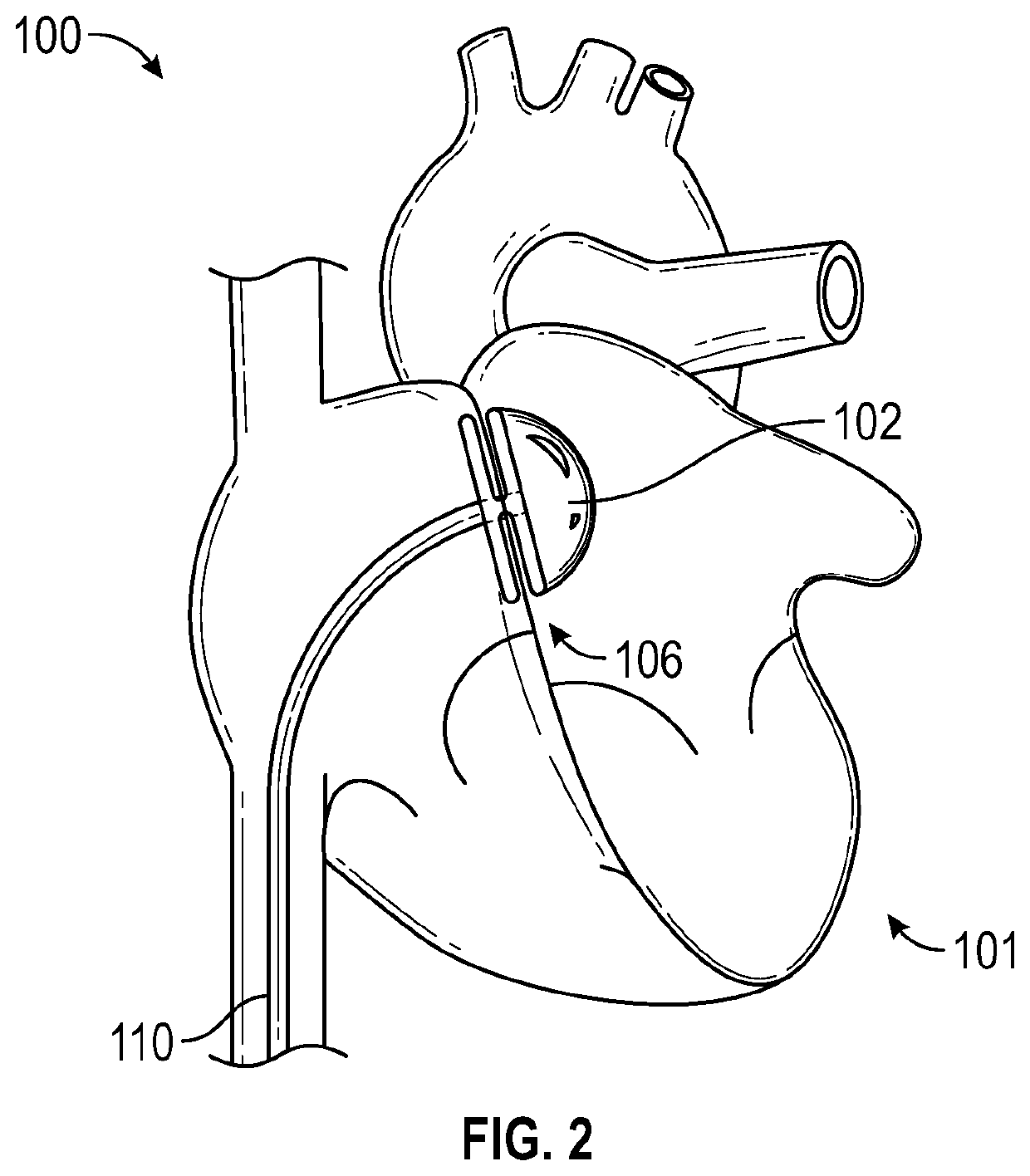Intra-cardiac left atrial and dual support systems
a support system and left atrial technology, applied in the field of implantable cardiac devices, can solve the problems of heart failure, costing the u.s. healthcare system over $30b annually, hf treatment and hospitalization, etc., and achieve the effects of reducing and increasing the pressure in the left atrium
- Summary
- Abstract
- Description
- Claims
- Application Information
AI Technical Summary
Benefits of technology
Problems solved by technology
Method used
Image
Examples
embodiment 1
[0110]A system, comprising:[0111]a pressurizing element;[0112]an atrial positioning structure coupled to the pressurizing element and configured to position the pressurizing element in a left atrium of a heart of a patient; and[0113]control circuitry configured to:[0114]operate the pressurizing element to decrease a pressure in the left atrium during atrial diastole to draw oxygenated blood out of the lungs of the patient by increasing left atrial reservoir strain and a relative volume of the left atrium to reduce a filling pressure in the left atrium; and[0115]operate the pressurizing element to increase the pressure in the left atrium during atrial systole to increase active strain by reducing a relative volume of the left atrium to increase a left atrial pressure during atrial systole, wherein the increase in the left atrial pressure during atrial systole increases a pressure differential between the left atrium and left ventricle that improves diastolic filling of the left ventr...
embodiment 2
[0116]The system of Embodiment 1, wherein the pressurizing element comprises a balloon, wherein operating the pressurizing element to increase the pressure in the left atrium comprises filling the balloon with a liquid or a gas, and wherein operating the pressurizing element to decrease the pressure in the left atrium comprises removing the liquid or the gas from the balloon.
embodiment 3
[0117]The system of Embodiment 2, wherein the atrial positioning structure comprises a septal anchor or a left atrial appendage anchor.
PUM
 Login to View More
Login to View More Abstract
Description
Claims
Application Information
 Login to View More
Login to View More - R&D
- Intellectual Property
- Life Sciences
- Materials
- Tech Scout
- Unparalleled Data Quality
- Higher Quality Content
- 60% Fewer Hallucinations
Browse by: Latest US Patents, China's latest patents, Technical Efficacy Thesaurus, Application Domain, Technology Topic, Popular Technical Reports.
© 2025 PatSnap. All rights reserved.Legal|Privacy policy|Modern Slavery Act Transparency Statement|Sitemap|About US| Contact US: help@patsnap.com



